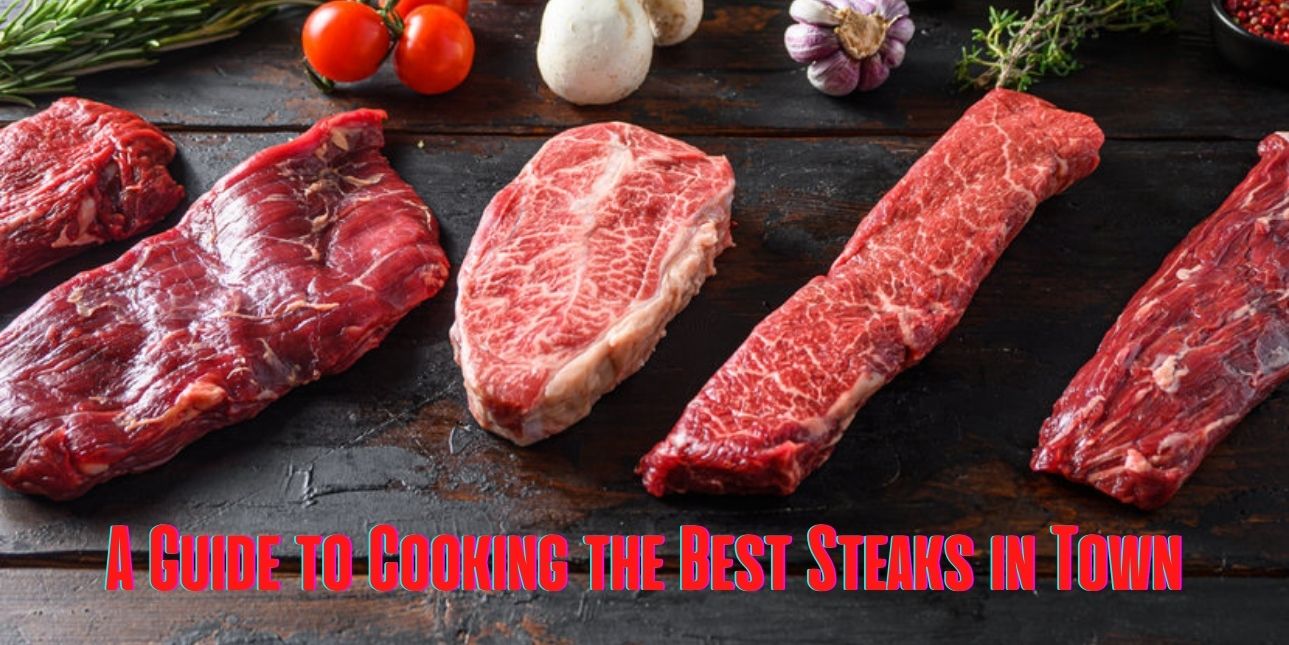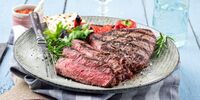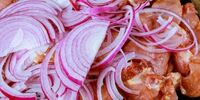

The most difficult part of cooking steak at home is selecting a steak at the market. Whether you cook at home or save it for a special occasion, knowing the types of steak cuts available is essential.
Types of steaks
Steaks are available in all types of shapes, cuts, and sizes. They can be cooked in a variety of ways to suit each individual's preferences, ranging from rare to fully done. The marbling, softness, and pricing of a steak can vary greatly, and each cut has its own distinct flavors and attributes. Some cuts go better on the grill, while others do well on the burner, but each cut has something delicious to give when cooked properly.
Trying to choose from different types of steak at your grocery store's butcher counter can often be a daunting task.
Let's learn about some of the top steak cuts available in the market and how to cook them to perfection.
- Filet Mignon
The steak cut from the beef tenderloin, a long, cylindrical muscle that runs along the spine, is known as filet mignon. Because the muscle doesn't get much work and is so sensitive that you can cut it with a fork, it's one of the most expensive cuts of beef. Because steaks are already tender, they don't need to be marinated, so serve them with a delicious sauce or butter instead.
One such example is the Merlot Filet Mignon.
How to cook it:
Since these types of steaks are practically fat-free, you don't want to overcook them or they'll dry out. Simply season the filet with salt, pepper, and herbs of your choice. Cook it until it achieves a rare or medium-rare temperature in a cast-iron skillet.
- Ribeye
The Rib-eye steak is the most marbled, tender, and flavorful. It's a boneless steak that's from the center of the rib area. Because of the high-fat content, this is an easy steak to cook. Indeed, even a slight overcook does little to impact its tastiness, consistency, and most important of all, its juiciness! Look for rib-eyes with good marbling and the glorious fat cap on the top when shopping.
How to cook it:
Because of the fat content, you won't need to marinate this steak type. A basic salt-and-pepper rub that doesn't mask the meaty flavor, works wonders. Cook the rib-eye over a dry heat source, such as a grill or a cast-iron skillet, until it reaches the temperature you desire.
Use this recipe for a butter-basted rib-eye steak to bring out the flavor of the meat.
- Strip steak
The strip steak, often known as a New York strip, is a short loin cut. It is usually always sold as a boneless steak and contains less fat than a ribeye but more flavor than a tenderloin.
How to cook it:
Strip steaks are prepared in the same manner as ribeye steaks: seasoned with salt or a dry rub and cooked over dry heat, as in this cast-iron pan steak dish.
- Sirloin
These boneless steaks, also known as top sirloin, come from the sirloin part of the animal, near the back. Some think sirloin steaks aren't tender or tasty, but we disagree; they have a really good beef-forward flavor, and their low price makes them ideal for weekday dinners.
How to cook it:
You'll want to avoid overcooking the sirloin because it doesn't have a lot of fat or intermuscular marbling. Any temperature higher than medium will have a dry flavor. In recipes like zesty sirloin steak, these steaks taste wonderful when spiced up with a dry rub.
- T-bone or Porterhouse
Do you want a huge cut of meat that contains two varieties of steak in one? If that's the case, the porterhouse steak is for you. The cut includes both the strip and the tenderloin. The main difference between a T-bone and a porterhouse is that the latter is sliced from the back of the loin and contains more filet mignon. These types of steaks are delicious, however, they are a little more difficult to prepare than others due to the two differing fat concentrations.
How to cook it:
Cook these steaks over dry heat, like you would a strip loin, checking for doneness with a meat thermometer if necessary. Cut the meat from the bone into two pieces when it has rested, slicing each one perpendicular to the bone. Then, for presentation purposes, replace the pieces around the bone to make it look like a full steak. When preparing T-bone steaks with burgundy mushrooms, use this recipe.
- Tomahawk
This cut of beef is essentially a ribeye that hasn't had the rib bone removed. The meat thickness of a tomahawk is determined by bone thickness. Nonetheless, the majority of them are roughly two inches long. They're also big enough to feed a crowd!
How to cook it:
They appear formidable, but all you need is a basic understanding of how to cook a large steak to pull it off. A cast-iron pan or the hot side of the grill is ideal for searing a tomahawk steak. Then finish them off in the oven or on the grill's indirect heat side. Find your favorite grilled steak recipe from our list of the best-grilled steak recipes.
- Flank
We've got a favorite of many meat enthusiasts here. Large and flat, flank steaks are ideal for sharing with friends and family.
It comes from the belly, however, the flank region is located further in the back of the beef. It's thicker and wider than the skirt, and it's a little softer when cooked.
How to cook it: Use a delicious marinade and cook flank steak over high heat, just like skirt steak. When cooked over medium, it can become tough, and we prefer it medium-rare. Thinly slice flank steak against the grain for the finest results.
- Hanger
Although the hanger steak is not as well-known as the ribeye or tenderloin, it is a must-try for every steak enthusiast.
It comes from the cow's plate or belly area, however, it isn't attached to any bones. This is a terrific steak to marinate or wet-rub before grilling over high heat.
How to cook it:
Hangers thrive from a marinade with a strong acidic component, just as skirt or flank steaks. Cook it over high heat, then before serving, cut it against the grain. Hanger can be cooked to medium-rare, although we prefer it at medium temperatures.
- The Denver Cut
Denver steaks are a well-known cut of meat that comes from the chuck roll's underblade region, which is famed for its rich roasts but also produces some lesser-known steaks. This region is notoriously harsh and unsuitable for steaks, but due to Denver's central location, it receives very little exercise. It's marbled like a strip, but without the fat.
How to cook it:
These steaks are fantastic whether cooked sous vide or on the indirect side of the grill before being reverse-seared at the end. They taste best when cooked medium-rare to medium.
For industrial kitchens, storing steak at a specific temperature is critical because it keeps the meat fresh. With walk-in units, walk-in coolers, and walk-in freezers, you may enhance your meat storage, resulting in less wastage and flavor loss, impacting customer satisfaction.
When cooked in a precise way, each cut’s flavor and taste are amplified, allowing you to enjoy your steak to the most extent possible.








